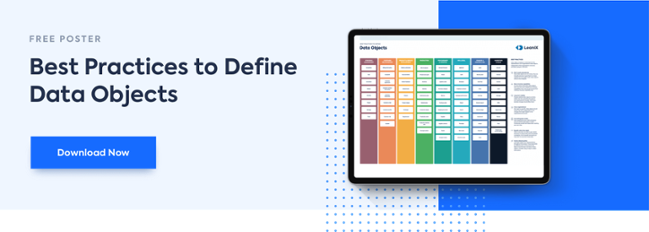
Data migration strategy is a vitally important topic for modern IT professionals. Our systems, infrastructures, and tools are evolving at a rapid pace, but digital transformation cannot succeed unless your data can follow you into your new IT infrastructure.
Any company that’s been operating for a span of time will have used a variety of IT systems and tools with data stored in numerous formats. Standardizing this data and making it system-agnostic is key before you can migrate it into a future-proof system.
Fortunately, there are best-practices approaches and software solutions to help you understand when you need to migrate data and make a plan to do it successfully.
Data Migration Types and Methods
There is no one-size-fits-all approach to data migration. Different approaches work best for different organizations and scenarios. The key is to understand your options and choose the best fit for your needs between:
- Storage migration - straightforward transfer of data from one storage location to another
- Database migration - upgrading a database engine, which usually requires reformatting
- Application migration - a combination of the above, in which both the application and database files it contains are moved to a new location
For any type of data migration, you can choose between two primary methods:
- ‘Big bang’ migrations - where all the data is migrated in one go - are cost effective, and can be completed quickly. However, risk is higher because issues can have widespread, immediate impacts.
- Trickle migrations have a phased approach in which old and new systems run in parallel to prevent downtime, and data is migrated gradually. These happen more slowly and can be costlier to execute over a longer time period, but they can avoid downtime completely and minimize risk with phased data movement.
To choose the best approach for your migration, you’ll need to identify your top priorities and know what’s most pressing:
- If time is of the ultimate essence for migrating your data, the ‘big bang’ method is likely your best choice
- If your company can’t afford downtime, a trickle migration might be better for you
Let’s dive further into how to navigate these choices and execute a well-planned migration with six proven data migration best practices.
Data Migration Step 1: Scope The Project First
To start, you’ll want to take a high-level look at your data migration strategy. Ask questions like:
- What brought on the need for migration, what are the goals, and what challenges might you encounter?
- Who needs to be involved in the planning process and who will be impacted by it?
- When does the migration need to be completed by and when can you start?
Define the type of migration you’re executing and choose the right method. You should get leadership buy-in and build your migration team, which should include stakeholders from any business units that will be impacted.
Data Migration Step 2: Make A Detailed Plan
Next, outline your data migration plan. You’ll want to define specific timelines, tasks, deadlines, deliverables, and persons responsible for each. Your migration plan should serve as an active, accessible guide and a reference point for measuring progress at any point in the process.
Digital transformation roadmaps, such as the one created in the LeanIX platform below, can be valuable tools during this step, providing a visual representation of your migration plan and its many moving parts to all your stakeholders.
To better understand how the LeanIX platform can support you with data migration:
Data Migration Step 3: Audit and Clean Up
This is your deadline to clean up your existing data ready for your data migration. Otherwise, your migrated data may not be accessible in your new system.
You can begin by auditing your data source. Assess your data’s current format, and how it will fit in your new system, format, or location. Look for missing fields or inaccuracies that could impact data quality.
If you’re seeing larger issues or trends as it relates to data issues, take time to resolve them and set quality standards for the future so the problems don’t re-occur in a new environment. Not doing so can cause unexpected issues during the process and it can be harder to resolve these later on.
Data Migration Step 4: Over-communicate
Different areas of your business are interconnected in complex ways. Data migrations will impact many different roles and business units across the organization. Including stakeholders from each of these areas is a first important step to effective communication about your planned migration.
Scope out how your migration plan will be communicated by the execution team to gain buy-in, put stakeholders on the same page, and minimize adverse impacts on their work. Change meets natural resistance in almost every case, but taking time to explain how it will happen and helping to mitigate concerns goes a long way in getting everyone onboard.
Data Migration Step 5: Adopt The Right Tools
Data migration tools are designed to accelerate and automate the process, while minimizing the impact of human error on the process.
Given the volume of data that companies deal with today, most migrations are impossible without support from the right tools in:
- Extract, transform, load (ETL) - extracting data from its current system, transforming it into its new required format, and loading it into its new system
- Replication - copying data into a new system
- Wide compatibility - can connect to and work within many different systems
Tools like the LeanIX platform offer comprehensive, end-to-end migration capabilities so you can access the support you need in a single solution.
Data Migration Step 6: Back Up and Test
Last, but definitely not least, take these two important steps to protect your data, systems, and entire infrastructure from data loss and downtime during your data migration:
- Before any data is migrated, replicate and back it up, so you aren’t at risk of losing critical data during the process
- Then, test your design and strategy with small sample data batches prior to your full migration to be sure things execute as anticipated and resolve any unexpected issues
Level-up Your Data Migration Strategy
Data migration is an inevitable undertaking for most businesses, given the critical role of data and the speed at which our IT infrastructures evolve. As with any type of digital transformation, it’s planning, foresight, collaboration, and the right tools that will help you execute your migration successfully.
Further, maintaining a flexible IT infrastructure, optimized tech stack, and intentional data strategy positions your organization to execute migrations seamlessly whenever the need arises.
LeanIX gives your business a common language and single source of truth to make your transformations happen better, faster and with greater impact.
Learn how LeanIX can power your successful data migration:






